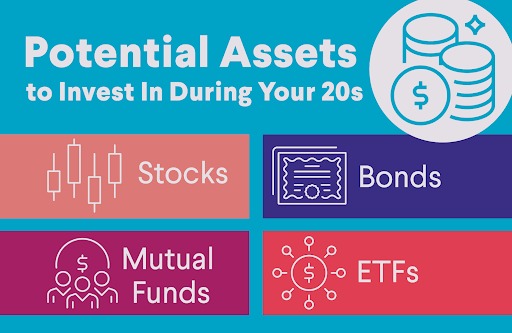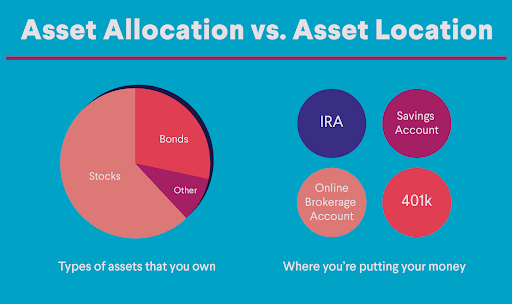Cosigning a Personal Loan: Risks and Benefits
A personal loan cosigner is someone who adds themself to a loan application along with the primary borrower. By taking this step, a cosigner — who typically has good credit — can help an applicant who has a poor credit score or thin credit history get approved for funding.
However, cosigning does come with risks: The cosigner is as liable for the debt as the primary borrower. If the primary signer can’t make payments, the cosigner is expected to swoop in and make them instead. If loan payments are late or the loan goes into default, both signers will likely see their credit score take a hit.
Understanding Cosigning
As mentioned above, a cosigner is someone who adds their name to a loan application, taking on equal financial responsibility for the loan. Their credit history, income, and other financial qualifications will be part of the materials provided for the loan application. A cosigner’s solid credit score and history can substantially increase the approval odds for primary borrowers with little credit history (or a poor one).
By becoming a cosigner, you might enable a close friend or family member to get approved for a personal loan at a more favorable rate and/or for a higher amount.
Cosigning examples: It’s common for parents to cosign student loan applications for college students, whose credit files are likely still thin. Or if you’ve had some negative credit events (such as late payments) on your file for a few years but are ready to buy a new car, enlisting a cosigner could help you successfully close the deal — and potentially qualify for a lower interest rate.
In the case of a personal loan, it is likely to be an unsecured term loan at a fixed interest rate that the primary borrower is seeking. If approved, these funds could be used for anything from car repairs to travel expenses to a home improvement project.
An important note: Understand the difference between a loan guarantor vs. cosigner. If you are a guarantor, your responsibility only kicks in if the loan goes into default, but as a cosigner, you are as legally responsible for the debt as the primary applicant at every step along the way. This means that if that applicant makes late payments, the cosigner’s credit history and score can be negatively impacted.
If the debt is unpaid and goes to collections, both cosigner and guarantor could face a court case and potentially have their wages garnished.
Benefits of Cosigning a Personal Loan
The upsides of cosigning a personal loan include:
• Adding a cosigner can increase the odds of approval for the primary borrower, possibly unlocking financial products and milestones they otherwise wouldn’t reach. For instance, they might use a personal loan to consolidate credit card debt, thereby freeing up funds to pay off a student loan.
• In addition to gaining approval, enlisting a cosigner could help the primary borrower snag a higher loan amount and/or a lower interest rate.
• For cosigners themselves, adding their name to a loan could potentially build their credit history in the long run. It might, say, increase their credit mix, which could be a positive factor, as long as the loan is paid on time each month.
In these ways, cosigning could benefit your financial standing.
Recommended: How Cosigning Affects Your Credit
Risks of Cosigning a Personal Loan
The risks of a personal loan with a cosigner should not be taken lightly:
• Should the primary borrower fail to make payments and end up defaulting on a personal loan, the debt is as much the cosigner’s responsibility as the borrower’s.
• If the primary applicant makes late payments on the loan — or fails to make payments at all — those factors will impact the cosigner’s credit file just as they will the primary applicant’s. That’s true up to and including legal suits.
• Cosigners are usually people you’re close to in life (like family members or dear friends). For this reason, enlisting or becoming a cosigner has the potential to strain interpersonal relationships if something doesn’t go as planned. How would you feel if you were a cosigner on your sibling’s personal loan and they failed to make payments, leaving you saddled with debt? It’s worthwhile to think through this kind of worst-case scenario before agreeing to cosign.
• The basic act of cosigning a loan can also negatively impact a cosigner’s credit, even if the debt is managed well by the primary applicant. An example: The loan could increase the overall amounts owed, possibly lowering your credit score. In addition, adding your name to the application could ding your credit score a bit for a brief period since a hard credit inquiry will be involved.
Even if you are eager to help a friend or family member snag a personal loan by serving as a cosigner, it’s important to evaluate these risks before diving in.
Legal Implications of Cosigning
While it usually doesn’t happen until a debt has gone unpaid for a long time, it is possible for a collections agency to take borrowers — including personal loan cosigners — to court.
If the judge rules in their favor, the collector could potentially garnish your wages, place a lien on your property, or freeze funds in your bank account. These are reasons why it’s so important for cosigners to ensure they’re actually capable of repaying a loan in the primary applicant’s stead if necessary.
Factors to Consider Before Cosigning
If you’re considering doing someone the (big) favor of applying for a personal loan as a cosigner, here are some factors to think through carefully before you sign your name on the dotted line.
• Your own credit history. Consider whether your credit history is strong enough to help the primary borrower successfully apply for a personal loan in the first place. If your credit is also only so-so, the application may be denied — or subject to a higher interest rate, which could make repayment more difficult.
• Your financial goals. While cosigning a personal loan could be an altruistic act, don’t be totally selfless. This decision could have a negative impact on your credit history or even your cash flow if you end up being the one to take over the payments. Be sure to consider your own financial goals when weighing your options.
• Your relationship to the person asking. Cosign a loan only for someone you trust will do everything in their power to repay the loan on time. Also keep in mind that if something goes awry, your relationship to that person may end up strained. Even if the only hit you take is emotional and not financial, that can still have a profoundly negative impact on your life.
Recommended: Personal Loan Guide for Beginners
How to Protect Yourself as a Cosigner
If you do decide to be a personal loan cosigner, here are some ways to help protect your financial situation.
• Draft a written contract with the primary applicant. While verbal promises can go a long way, having a written document stating both parties’ expectations — and outlining what actions will take place if they’re not met — can be invaluable if something goes wrong.
• Ask if you can be a guarantor instead. Being a guarantor on a loan allows the primary applicant to enlist your help as a financial backer. However, it stops short of conferring the full responsibility of the loan on you. Instead, if you’re a guarantor, you’ll only become responsible for the loan if it goes into default (which is a serious consideration in its own right, but somewhat less entwined than a cosigner role).
• Monitor your credit score. Given the impact cosigning a loan could have on your credit, it’s a good idea to enroll in a free credit score monitoring program to help keep you abreast of any sudden changes. (Credit score monitoring is often a good financial move even if you’re not cosigning a loan.)
• Ask for copies of each month’s statements. Remember, this loan is just as much yours as theirs. Ask for — and keep — copies of all loan paperwork, from the original agreement to each monthly statement, so you’re up to date on exactly where the loan stands.
The Takeaway
If you have a solid credit history when you cosign a personal loan, you can help increase the primary applicant’s chances of being approved. However, you also take full legal responsibility for the debt. Be sure you only do so in situations in which you trust the primary borrower implicitly and could afford to take on the debt if that person were to default.
If you are in the market for a personal loan, with or without a cosigner, see what SoFi offers.
Think twice before turning to high-interest credit cards. Consider a SoFi personal loan instead. SoFi offers competitive fixed rates and same-day funding. Checking your rate takes just a minute.
FAQ
What happens if the primary borrower defaults on the loan?
If the primary borrower defaults on a loan, the creditor (and possibly a collections agency) will turn to the cosigner. That means the loan in default could negatively impact the cosigner’s cash flow, credit history, and credit score. The situation could even end up leading to a court case for the primary borrower and cosigner. That’s why it’s important to think carefully before cosigning a loan.
Can I remove myself as a cosigner from the loan?
It may be possible to remove yourself as a cosigner — but it might not be a simple process. Removing the cosigner often makes the loan a riskier prospect for the lender, so they might do what they can to keep you on the file. If you can’t get a simple cosigner release, the primary borrower may need to take out a new loan, on their own, to pay off the one you cosigned. This would then release you from the debt.
Does cosigning a loan affect my ability to get other loans?
Yes, it could. Think of cosigning just like applying for a loan for yourself. Along with the hard credit check (which could slightly and briefly lower your credit score), the entire loan will also show up on your credit report, potentially increasing your overall amounts owed and your DTI, or debt-to-income ratio. These factors could negatively impact your credit score and make getting another loan harder.
Photo credit: iStock/Moyo Studio
SoFi Loan Products
SoFi loans are originated by SoFi Bank, N.A., NMLS #696891 (Member FDIC). For additional product-specific legal and licensing information, see SoFi.com/legal. Equal Housing Lender.
Disclaimer: Many factors affect your credit scores and the interest rates you may receive. SoFi is not a Credit Repair Organization as defined under federal or state law, including the Credit Repair Organizations Act. SoFi does not provide “credit repair” services or advice or assistance regarding “rebuilding” or “improving” your credit record, credit history, or credit rating. For details, see the FTC’s website .
Non affiliation: SoFi isn’t affiliated with any of the companies highlighted in this article.
Financial Tips & Strategies: The tips provided on this website are of a general nature and do not take into account your specific objectives, financial situation, and needs. You should always consider their appropriateness given your own circumstances.
This article is not intended to be legal advice. Please consult an attorney for advice.
SOPL-Q324-020
Read more







